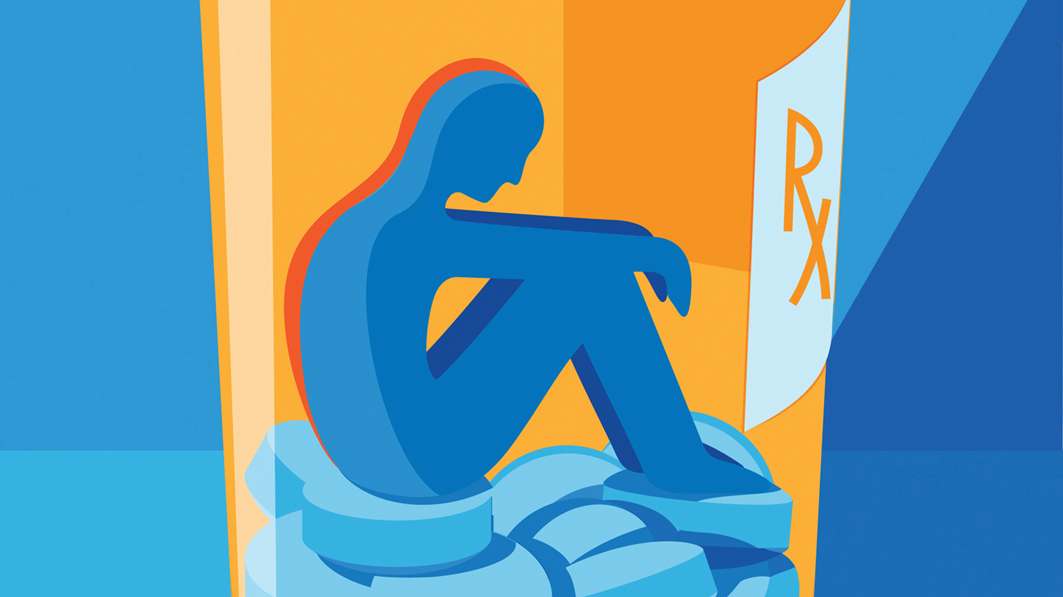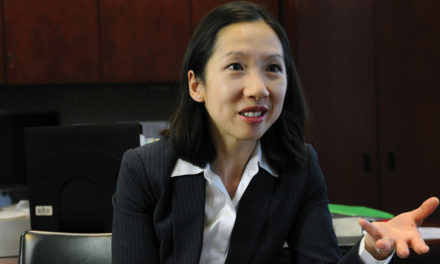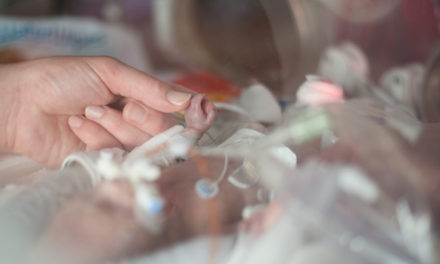How much more can emergency rooms handle?
The most recent numbers from the U.S. Centers for Disease Control and Prevention (CDC), spanning 45 states, show nearly 143,000 ER visits for opioid overdoses over a 15-month period. That period ended in the third quarter of 2017 and represented a 30-percent jump from the same time span a year earlier.
“The staff isn’t sure what to do with [opioid overdose patients],” says Karl Benzio, M.D., a Christian psychiatrist and member of Focus on the Family’s Physicians Resource Council (PRC). “You don’t feel comfortable just discharging the person. The staff doesn’t know how dangerous the person is when they leave the doors, whether they will overdose—or worse—when they leave, how to find a responsible party to transfer the care and responsibility to.”
Fellow PRC member W. David Hager, M.D., agrees.
“We’re seeing a lot of frustration among our providers with ‘frequent fliers,’ ” says Hager, a practicing physician with Baptist Health Medical Group in Lexington, Ky.
Both physicians point to different problems connected to the opioid crisis.
Benzio notes that many overdose cases are complicated because ER staffs aren’t generally equipped to deal with mental or behavioral health. Many of those patients should ideally be in a residential rehabilitation program, but are unable to secure a coverage for it. This leaves the medical personnel on the front lines of care facing a dilemma for which there are no easy answers.
Between the rapid rise in overdose cases and the moral gray area of providing narcotics to so-called “frequent fliers,” America’s emergency rooms are in a precarious position when it comes to the opioid epidemic. The crisis threatens to break the backs of overworked ER staffs, whose efforts to help those in pain with long-term prescriptions may only be fueling the crisis.
Fake Treatment Centers
The overwhelming strain the opioid epidemic has placed on legitimate health care providers has also opened the doors for unscrupulous con artists looking for easy money. These fraudsters—and it’s not clear just how many there are across the country—run fake treatment centers preying on those seeking a way out of their opioid struggles.
“Several factors came together—so many people in need of addiction treatment and managed care to reduce their length of stay in the hospital—that there became a huge need for more addiction rehabs,” Benzio explains. “Certain states that had a high level of drug use made it very easy to open a rehab; not many restrictions, licensing issues or hoops to go through. Also, insurance plans needed a place to put someone who was in danger of overdosing but needed to be babysat, so places put together minimally trained people with a schedule and sold it to the insurance as a rehab.”
With the potential to make big money and only vague criteria for what a “quality” treatment facility includes, many unqualified providers jumped into the rehab industry.
“A lot of people going through addiction thought ‘Wow, I could put together a better program than that,’ so they developed their own after getting clean for 20 minutes,” says Benzio.
Though he believes some who entered the rehab industry in this way truly wanted to help, others, Benzio says, “are outright shams and just billing insurance large sums. Some bill for services they don’t even provide. Some will encourage their patients to use drugs or supply them so they can continue to bill insurance. Many cannot get doctors or licensed therapists [on staff], which would make them accountable to higher state and national licensing standards.”
Fortunately, federal, state and local government agencies have begun to crack down on these practices over the past couple years. In Florida alone, NBC News reports dozens of people were arrested in June 2017 for patient brokering, the practice of finding those who are struggling to overcome drug abuse and have good insurance, then “selling” them to specific programs, a practice that, in some cases had been going on more than a year.
A 2017 cross-country sweep resulted in 412 suspects facing federal charges—many of them allegedly involving opioids—for health care fraud. The U.S. Department of Justice called it the largest health care fraud enforcement action in history, involving approximately $1.3 billion in false billings.
“The Department’s work is not finished,” Attorney General Jeff Sessions said when announcing the sweep. “In fact, it is just the beginning. We will continue to find, arrest, prosecute, convict and incarcerate fraudsters and drug dealers wherever they are.”
Finding Real Help
Amid a sea of get-rich-quick fakers, how can those struggling to overcome opioid addiction find genuine help? How can they—and their families—be sure they’re not scammed by fraudsters?
Benzio says quality facilities have several standout features. He advises looking for those that are Christian-owned, apply the Bible to daily living and emphasize the importance of growing in a relationship with God. Some of the other key elements include:
One of the owners is an accomplished clinician, such as a psychiatrist, counselor or therapist. Clinicians with ownership stakes
usually have professional reputations to maintain, an understanding of what great care looks like and a desire to make clinical excellence a primary focus. Benzio points to JourneyPure in Tennessee and A Place of Hope in Washington state as good examples of clinician-run programs.
A psychiatrist sees the patient early in the admission process for detox purposes and to help diagnose underlying issues that contribute to the patient’s opioid use.
The treatment and residential facilities are located on the same campus, allowing for a higher level of accreditation and insurance approval.
Individual therapy is provided by masters-level and/or licensed therapists. Each patient receives several individual sessions per week.
A Family Affair
Between the overloaded hospitals, risky prescribing practices and minefield of rehab programs, the opioid epidemic is stretching and straining America’s health care resources like nothing we’ve ever seen. Tackling those (and many other) massive opioid-related issues will require innovative solutions.
Enter Cece and Bobby Brown of Charleston, W.V.
Their son, Ryan, died four years ago, at age 27. “Ryan was just like the kid next door,” his mother remembers, describing him as a trouble-free child who loved sports, music, skateboarding and God.
“I sent him to college to get a degree, and he came home with an addiction.”
Ryan struggled with opioids for seven years, surviving three overdoses along the way. But in April 2014, he had another—at the local mall. The Browns believe their son ran into an acquaintance there who gave him the heroin that snuffed out his life.
The couple spent thousands on detox and rehabilitation programs for Ryan. What he really needed, they say, was a long-term facility where he could get clean for good. Instead, a typical cycle for Ryan would consist of seven days of detox and regular participation in outpatient programs, therapy groups and Narcotics Anonymous. That combination would keep him clean for about six weeks.
But he needed more.
Ryan was on waiting lists for two long-term facilities when he died. Having aged out of his parents’ insurance plan at 26, he had just received a Medicaid card three days before his death. Most heartbreakingly, his parents learned after his passing that a treatment facility that could have accepted Ryan was only three miles away.
Now they can’t help but wonder: What if the wait times had been shorter, the coverage had come a bit earlier, and they had known about the facility nearby?
“That would’ve given opportunity. I can’t say that would have changed things, but opportunity is everything,” Cece says.
Over the last four years, the Browns have made it their mission to make sure others with similar struggles in West Virginia have the opportunities Ryan didn’t.
Innovate for the State
After a two-year effort led by the Bobby and Cece, last year West Virginia lawmakers passed legislation creating the Ryan Brown Addiction Prevention and Recovery Fund. The fund aims to expand the state’s capacity to help those struggling with opioids but lacking private insurance, Medicaid or Medicare coverage by blending public grants and private dollars.
People who want to support it are able to contribute charitable gifts.
So far, the model has yielded promising results: The West Virginia Department of Health and Human Services has awarded $20.8 million through the fund to nine long-term treatment facilities statewide. That’s already translated to 300 more West Virginians getting treatment than would’ve been the case otherwise.
The Browns explain it’s just reality that many struggling with opioids have low-wage jobs that don’t offer insurance. Some, they say, have felonies that prevent them from securing jobs with better wages and benefits. But that doesn’t mean they should be left behind. “If they don’t want help, there’s nothing we can do. But if they do want help, we need to get them help,” says Bobby.
The Browns are also grateful West Virginia has addressed another problem: In September 2015, the state launched a resource hotline to help those combating opioid addiction.
“We didn’t have a number to call to talk to anyone; didn’t know where to get help,” Bobby recalls. “Now that number has come out.”
Those needing help can simply call 1-800-HELP4WV—and thousands have.
Bobby and Cece say they feel honored to play a role in easing the burden the opioid epidemic has placed on the health care system, and to help families struggling with the weight of it all find solid answers. They’ve been part of several White House events aimed at finding solutions, and say they’ll continue to engage the Trump administration in the hopes of keeping the heat on. As a reminder of the epidemic’s devastating toll, Cece displayed a picture of Ryan at a roundtable discussion with First Lady Melania Trump earlier this year.
“This is about people, not politics,” she says. “We want to make sure they see this is about a person, and not just Ryan. He’s just one of many.”
Originally published in the August 2018 issue of Citizen magazine.






